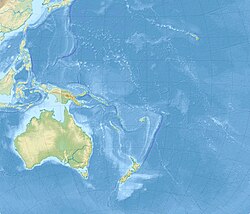Lord Howe Island Airport | |||||||||||
|---|---|---|---|---|---|---|---|---|---|---|---|
 Runway in 2016 | |||||||||||
| Summary | |||||||||||
| Airport type | Public | ||||||||||
| Operator | Lord Howe Island Board | ||||||||||
| Serves | Lord Howe Island Australia | ||||||||||
| Opened | September 1974 | ||||||||||
| Elevation AMSL | 17 ft / 5 m | ||||||||||
| Coordinates | 31°32′18″S159°04′38″E / 31.53833°S 159.07722°E | ||||||||||
| Maps | |||||||||||
 | |||||||||||
Location on map of Oceania | |||||||||||
 Interactive map of Lord Howe Island Airport | |||||||||||
| Runways | |||||||||||
| |||||||||||
| Sources: AIP and aerodrome chart [1] | |||||||||||
Lord Howe Island Airport( IATA : LDH [2] , ICAO : YLHI) is an airport providing air transportation to Lord Howe Island. [1] It is operated by the Lord Howe Island Board. [1] Prior to its opening in September 1974, Lord Howe Island was served by flying boats from Rose Bay Water Airport. [3] The pending cessation of flying boat operations prompted the NSW Government and the then Australian Department of Transport to engage the Australian Army Corps of Engineers to build a grass runway, thus allowing land-based aircraft to operate to the island. [4] [5]
